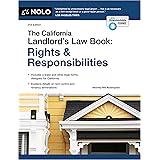Are you an aspiring real estate investor or an experienced flipper wondering about the future of house flipping? As discussed in the insightful video above with Jean Guirand, the landscape for flipping houses in 2025 is anticipated to be more challenging than in previous years. A slower market requires a more strategic approach, moving away from past trends that rewarded rapid transactions. This shift necessitates careful consideration of every aspect of the investment process, from initial property selection to the final sale.
The market in 2025 is characterized by an extended selling period for flipped properties. Many investors are observing that homes are remaining on the market for significantly longer durations. This slowdown in sales velocity directly impacts profitability and increases holding costs, a critical factor for any investor. Therefore, understanding these market dynamics is paramount for success in the current climate.
Navigating the Slowing Market for House Flipping in 2025
The current real estate market presents unique obstacles for those engaged in property flipping. A primary concern for investors is the increasing number of days a property spends on the market before sale. For instance, Jean Guirand shared an example of a flipped house in a “growth area” that had already been on the market for 129 days, with an additional 30 days expected. This extended timeline dramatically impacts an investor’s capital deployment and overall returns, emphasizing the need for robust planning. Furthermore, there is heightened competition from new construction, which often offers attractive incentives to buyers, making resale properties less appealing without similar benefits.
Key Considerations for Successful Flipping Properties
In a cautious market, several elements must be meticulously evaluated before committing to a flip. Location, finishes, and the provision of buyer incentives are now more critical than ever before. Properties are being scrutinized more closely by potential buyers who have more options available. These factors are especially important for properties priced below the $500,000 threshold, where incentives such as agent commissions or closing cost credits are frequently being offered. Strategic decisions are being made by savvy investors to ensure their properties remain competitive.
-
Location Matters More Than Ever: The adage “location, location, location” has never been more relevant. Investing in areas with strong, stable demand is crucial. Properties in less desirable or “changing areas” are being observed to take much longer to sell, if they sell at all. A thorough market analysis must be conducted to identify neighborhoods with consistent buyer interest and positive growth indicators.
-
Quality Finishes and Design: High-quality, contemporary finishes are no longer just a bonus; they are often a requirement to stand out. Generic or dated renovations will likely result in longer market times or lower sale prices. Modern design trends and durable materials are being prioritized by buyers. Consideration of the target demographic’s preferences within a specific location should guide renovation choices.
-
Offering Buyer Incentives: To compete with new construction, which often includes incentives, flippers in the sub-$500,000 price range are increasingly finding it necessary to offer their own. These might include paying a portion of closing costs or covering agent commissions. Such strategies are being implemented to make a flipped property more attractive to buyers and facilitate a quicker sale. It is important to factor these potential costs into the initial financial analysis.
Risk Mitigation and Strategic Property Selection
Entering the house flipping market in 2025 demands a heightened awareness of risk. It is advised that new flippers avoid entering markets where there are very few existing flipping activities, as this can indicate a lack of demand or unfavorable conditions. If only one or two flippers are present, it is often best for novices to allow more experienced investors to navigate those waters. Furthermore, specific property types, such as purely wood-frame houses in areas where block and stucco are the norm (like Florida), are noted as potentially harder to sell. Thorough due diligence is being emphasized as a non-negotiable step.
Even experienced investors are being seen to exercise increased caution. The video highlights how some flippers, who previously managed 40 deals in 2023, reduced their volume to 25 deals in 2024. This reduction, a 37.5% decrease, indicates a more reserved approach in response to market conditions. Therefore, properties that do not fit a specific “buy box” or clear exit strategy are being passed over. It is important for all investors to re-evaluate their criteria and ensure that every potential deal aligns with a well-defined plan.
Alternative Exit Strategies: Converting Flips to Rentals
When a flipped property fails to sell within an expected timeframe or at a desired price, a flexible exit strategy becomes invaluable. Jean Guirand mentions that some of his properties are being converted into rentals due to the inability to achieve a profitable sale price in the current market. This conversion allows investors to retain the asset, generate cash flow, and wait for market conditions to improve before selling. This adaptability is critical in a slow market, protecting against significant losses. An investor’s ability to pivot from a flip to a long-term hold demonstrates resilience.
The decision to convert a property to a rental property introduces different financial considerations. While it may delay the lump-sum profit typically associated with a flip, it can offer long-term benefits such as consistent rental income and potential tax advantages like bonus depreciation or cost segregation. These financial tools can help offset taxable income generated from other investments. Therefore, a clear understanding of these options is being considered essential for strategic portfolio management.
Financial Tools and Funding for Real Estate Investors
Access to appropriate funding is a cornerstone of successful real estate investment, especially when market conditions fluctuate. Hard money loans are frequently utilized for flipping projects, providing quick access to capital for property acquisition and renovation. However, the interest rates and repayment terms of hard money loans necessitate quick project turnaround times, which are currently being impacted by longer days on market. Thus, careful financial planning is being emphasized for every deal.
For investors looking to transition properties into rentals, Debt Service Coverage Ratio (DSCR) loans are being presented as an attractive option. These loans are primarily based on the property’s ability to generate rental income, rather than the borrower’s personal income. They often feature fixed rates for up to 30 years and require less documentation than traditional mortgages. This type of financing facilitates the conversion of a slow-selling flip into a stable, income-generating asset, providing a crucial safety net for investors in a challenging market for flipping properties in 2025.









